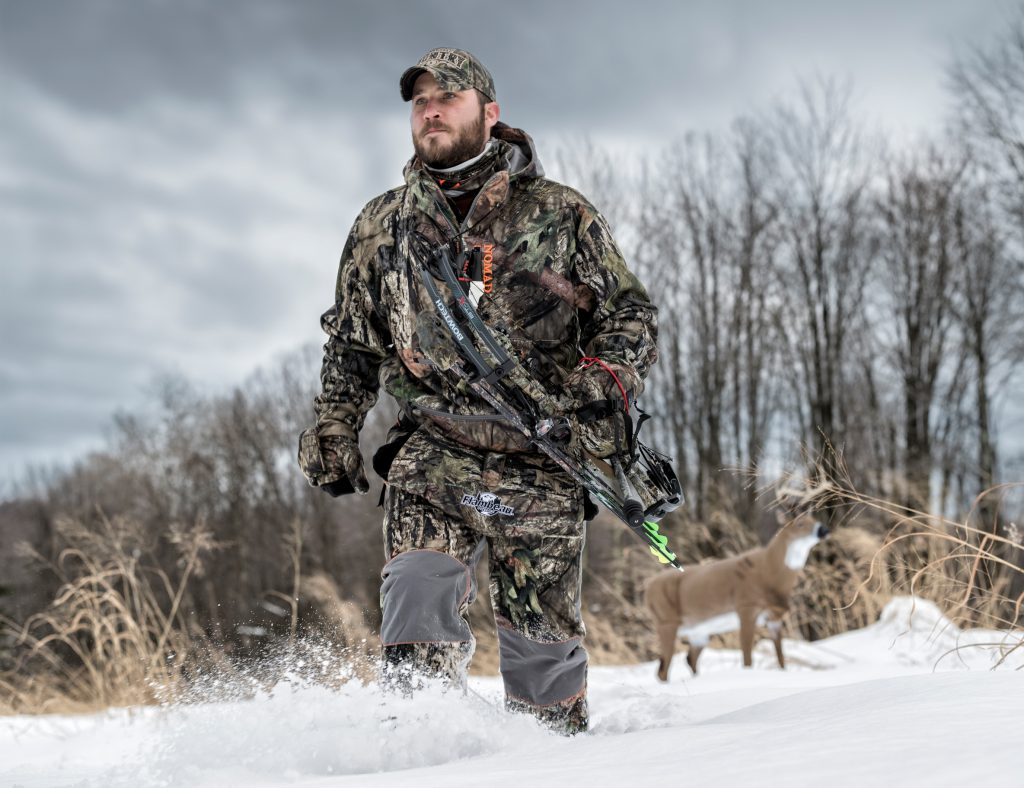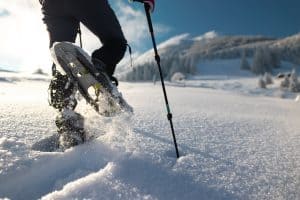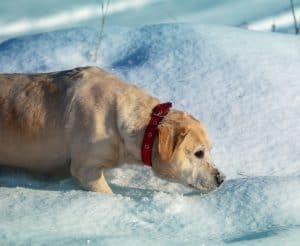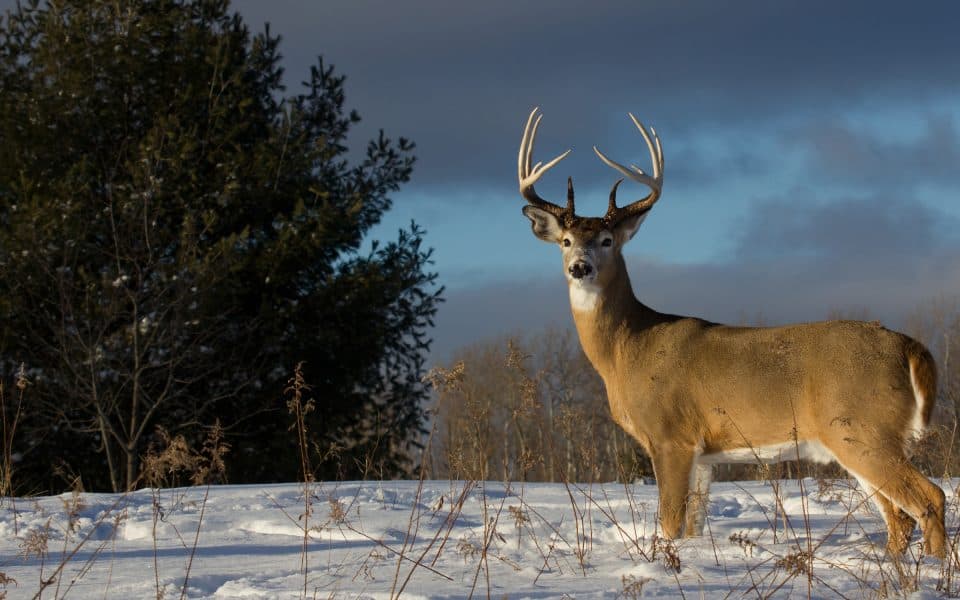Just a few hours into my morning hunt during one of those brutal cold-weather hunts, the bone-chilling Saskatchewan cold had accelerated my appetite. Reaching into the paper lunch bag our camp cook had prepared for me, I pulled out a sandwich: ham and cheese with mayonnaise. It may as well have been plastic and Elmer’s glue because it was frozen solid. Grimacing, as much about the sandwich as against the temperatures, I stuffed it and the rest of my lunch inside my Heater Body Suit and waited a half hour until it was soft enough that I could bite off small pieces and warm them in my mouth before chewing.
Anyone who has been there knows that the Prairie Provinces of Canada are an extreme example. They have the potential to produce something spectacular, but in order to realize that potential, you must endure hours of immobility in temperatures that will test your temerity. Thousands of hunters do it annually, and go back to do it again. Their success is due in large part to being prepared to withstand those conditions, and while conditions on our side of the border are typically less extreme, being properly prepared with the right clothing could mean the difference between feasting on the backstraps from the buck of a lifetime, or sadly sipping tag soup.
Layering Strategies: How to Dress for Hunting in Extreme Cold

This cliché has been repeated so many times it has become a mantra among cold-weather hunters. To use another cliché: it’s easy to take off what you don’t need but you can’t put on what you don’t have. Dress lightly for the walk in, then add layers after you get settled, and cool down. I’ve sometimes gone so far as to carry in a complete change of clothes, or even leave it in my stand. Walking in, you generate heat and moisture. The former is great, until it goes away. The latter can cause discomfort at best, and could be life-threatening at worst. A wet body sheds heat much faster than a dry one.
The material that makes up those layers is also important. To quote another cliché: “Cotton is rotten.” It absorbs and holds moisture. That may be great when hunting an early September velvet deer season, but it’s going to be your enemy in the cold, and could accelerate the onset of hypothermia. Your first or base layer should be made of material that pulls or “wicks” moisture away from your skin, and nothing works better than modern synthetics. I first learned this on a south Alabama hunt where temperatures were in the 90s. When I got out of my stand I hung my T shirt on a branch and by the time my guide arrived to pick me up it was nearly dry.
 The same is true for the mid-layer. It too should “wick” moisture away from your body. Additionally, it should have some bulk and air space to hold in body heat. Here again, synthetic fibers rule. There was a time when goose down was a popular insulation. It works, when dry, but feathers absorb moisture, become matted and lose their insulating properties.
The same is true for the mid-layer. It too should “wick” moisture away from your body. Additionally, it should have some bulk and air space to hold in body heat. Here again, synthetic fibers rule. There was a time when goose down was a popular insulation. It works, when dry, but feathers absorb moisture, become matted and lose their insulating properties.
At the risk of offending a few traditionalists, I recommend synthetic fibers over wool. For starters, wool absorbs odor easier, which is a bane to deer hunters. It also holds more moisture than synthetics. While it may draw sweat away from your body, it will hold sweat, rain and snow in the fabric, making it heavier, which is not something you want when tracking or still-hunting long distances.
Your outer layer is also important. It must prevent environmental moisture and wind from penetrating, but allow personal moisture to dissipate. Most hunter know the trade name of the pioneers of this technology, and now there are other, similar waterproof-breathable laminates. They all work about the same, if you keep them clean.
When dirt, grease and grime build up on the outside of your waterproof outer layer, the fabric loses its effectiveness and begins to hold water. Your waterproof outer layer should literally shed water like a duck (another cliché). If it doesn’t, wash it and if necessary, treat it with a water repellant spray.
That covers the basics but there’s more you can do to improve cold comfort. One is simply selecting warmer base layers or adding more mid layers, like an insulated vest. Fabric technology has come a long way and modern performance apparel now provides more insulation with less bulk. Some of the best cold weather gear I ever used had strategically located heat-absorption packs in the fabric (based on NASA and winter sports testing). Unfortunately, that company is no longer in the business of hunting apparel, but they still make ski wear. The ice fishing market also has some great cold weather choices.
You can, however, improve your comfort by attaching your own heat pads in strategic locations. This usually means places that are exposed to the air or where blood vessels come closest to the skin, like wrists, the back of your hands, the back of your neck and the top of your feet. The package may say “Toe” or “Foot” warmers but they’ll work anywhere. Again, at the risk of offending a few folks, I’ve tried all the rechargeable, battery operated types on the market. They all (mostly) work as advertised. So do disposable, single use types, but in the latter case, you don’t have to worry about re-charging them.

Keep Your Feet, Hands, and Head Warm in Freezing Temps
Speaking of feet, experienced hunters know how cold ones can bring a premature end, or a miserable experience to your day. The colder the temperatures, the more insulation you’ll want in your boots. But that can create the same dilemma as clothing if you have a long hike to your stand. That’s why you also want boots lined with fabric that draws moisture away from your skin. Inside that, moisture-wicking synthetic socks are a good start; but a better option is thin, synthetic sock liners inside heavier insulated socks. And don’t forget the heated insoles and toe warmers, which only work when exposed to air, making moisture-wicking, insulated socks an even more important choice.
 Take whatever boot manufacturers tell you about the insulating capabilities of their products with a healthy grain of salt. That’s only under optimal conditions. If your feet are wet, it goes down exponentially. But it does work, and can create excess moisture if you’re hiking to your stand in boots rated to sub-zero temperatures. It may seem extreme but if you can carry an extra pair of heavy insulated boots you may appreciate it in the long, cold term.
Take whatever boot manufacturers tell you about the insulating capabilities of their products with a healthy grain of salt. That’s only under optimal conditions. If your feet are wet, it goes down exponentially. But it does work, and can create excess moisture if you’re hiking to your stand in boots rated to sub-zero temperatures. It may seem extreme but if you can carry an extra pair of heavy insulated boots you may appreciate it in the long, cold term.
That old cliché about losing most of your body heat through your head is bunk. Still, a warm head improves comfort. Wear wool (if you must), fleece or some other synthetic that traps heat. Ear flaps help, but will reduce hearing. In extreme cold you may even want a face mask, and you’d be surprised how much difference even a thin layer makes.
Don’t forget your hands. Synthetic glove liners, fleece gloves or mittens are all good options. I prefer the former but if you go with the latter, those with flip-away tops are better when handling gun or bow.
Food and Fluids: Fueling Your Body for Long Cold Hunts
Some folks are surprised to learn how many calories they can burn just sitting still for hours in the cold. Bread and water may sound like rations for a galley slave but you’ll be grateful to have them, or something a tad tastier along on your hunt. You can also get dehydrated despite the lack of activity so fluids of any kind are important. Avoid diuretics like coffee, which provide short-term warmth but can increase dehydration. My favorite for the Thermos is tomato soup because it provides heat and nutrition. GORP (good, old raisins and peanuts) with a healthy portion of M&Ms is another good choice, along with other trail mix varieties and/or energy bars. You need sugar for quick energy and carbs for the slow burn.
Gear Up for Success: Cold-Weather Hunting Accessories
Some bold lads and lasses determined to brave the elements might call it cheating, but there are some very practical ways to make your stays more comfortable. A couple include the aforementioned Warm Bag or Heater Body Suit. Like a sleeping bag with legs, they provide an additional, very generous layer of insulation. Anything that intercepts precipitation and/or breaks the wind also helps, including a tree umbrella, a pop-up blind or a full-blown shooting house. Propane heaters take things to the next level. Just make sure your enclosure is sufficiently ventilated. Sure, it may not be quite the rugged endurance campaign, but if it keeps you in the woods and on your stand, all the better. For more gear tips check out these winter gear essentials from Mossy Oak.
Join our weekly newsletter or subscribe to GameKeepers Magazine.
Your source for information, equipment, know-how, deals and discounts to help you get the most from every hard-earned moment in the field.









